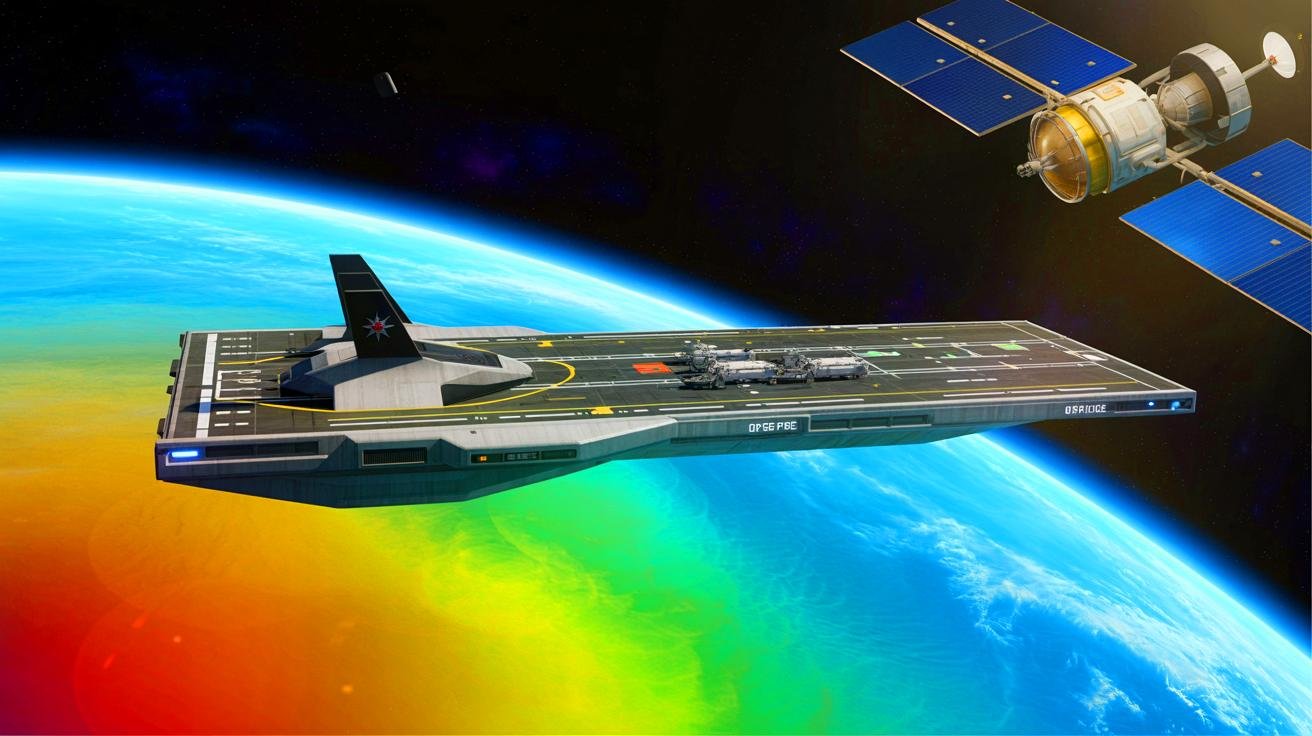
Warship Hangs Over the Clouds”: Space Force Rushes to Complete First Orbital Carrier Poised to Control the Skies Above Every Nation
By Rosemary Potter,
Published by Energy Reporters, 16 August 2025
As tensions escalate in the realm of space exploration, the U.S. Space Force’s collaboration with Gravitics to develop an orbital aircraft carrier marks a pivotal step in securing American dominance and enhancing satellite deployment capabilities in the face of potential global conflicts.
The United States is pushing the boundaries of space technology with a groundbreaking project that promises to redefine satellite deployment. At the heart of this effort is the development of an orbital aircraft carrier by the innovative startup Gravitics. This venture underscores the U.S.’s strategic focus on space as an essential domain and highlights the growing collaboration between private companies and national defense entities. As global tensions rise, the U.S. is making a decisive move to secure its presence and dominance in the space arena.
The Vision Behind the Orbital Aircraft Carrier
Gravitics has embarked on an ambitious mission to revolutionize satellite deployment with its orbital aircraft carrier. This $60 million project, funded by the U.S. Space Force, aims to enable the direct launch of satellites from Earth’s orbit. Such a platform promises to provide a faster and more agile response to national security threats by eliminating the need for traditional rocket launches. The concept of a space-based carrier represents a significant strategic advantage for the military.
This initiative reflects the U.S. military’s growing interest in maintaining a robust orbital presence, especially with the looming threat of a space arms race. Having a pre-positioned platform in orbit offers the flexibility to deploy satellites as needed, addressing both immediate and future security concerns. This innovation places the United States at the forefront of space technology, showcasing its commitment to maintaining leadership in this critical area.
Enhancing Space Security and Superiority
The orbital aircraft carrier developed by Gravitics offers an unpressurized environment to safely house multiple satellites. This setup ensures that satellites remain protected from the harsh conditions of space, safeguarding their batteries and sensitive electronics. Such protection is crucial in an era dominated by electronic warfare and cyber threats. The ability to isolate and shield satellites provides a strategic edge, enhancing the U.S.’s space security capabilities.
Moreover, the orbital carrier’s potential to conceal satellites from adversaries adds a layer of tactical advantage. Gravitics CEO Colin Doughan describes the carrier as a “game-changer” that aligns perfectly with the Space Force’s mission of orbital dominance. The project not only enhances military capabilities but also sets a precedent for future technological advancements in space exploration.
Public-Private Partnerships and Their Impact
The development of the orbital aircraft carrier is a testament to the growing importance of public-private partnerships in the space sector. Gravitics, in collaboration with Axiom Space, is also working on a pressurized space module, reflecting its commitment to both national defense and commercial solutions. This dual approach underscores Gravitics’s growth trajectory and its alignment with the Department of Defense’s objectives.
Such collaborations are crucial for integrating innovative technologies into national defense strategies. By working together, private companies and government entities can bolster the U.S.’s position in space while fostering the development of technologies with potential civilian applications. The success of these partnerships could pave the way for new market opportunities and further advancements in space technology.
The Future of Space Exploration
As technologies like the orbital aircraft carrier emerge, a new era of space exploration and exploitation is on the horizon. This technological leap has the potential to transform security, surveillance, and communication paradigms, not only for military operations but also for private sector involvement. The implications are vast, signaling a shift in how space is utilized and governed.
As the U.S. Space Force and companies like Gravitics prepare to meet future challenges, questions about international space cooperation arise. How will these innovations influence diplomatic relations between nations? More importantly, how can we ensure that space remains a domain of shared peace and progress, benefiting all of humanity?
See: Original Article





